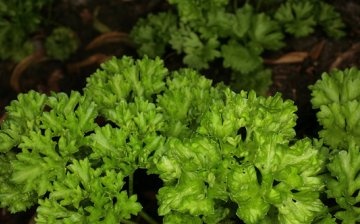Parsley varieties and its cultivation
If we consider the varieties of parsley, then one cannot fail to note the lack of their diversity. So, two large groups can be distinguished - leaf and root.
Based on the name, it is clear that both the leaves and the root vegetable are edible in root parsley. That is why it is considered the most common variety. The parsley root itself, in chopped form, can be added to canned food, soups and sauces. Parsley is used to season meat and fish dishes, salads.
By the way, the benefits of parsley are that it is characterized by its diuretic properties, is used for diseases of the gallbladder and liver, and also helps to lower blood pressure.
Growing parsley
Choose the right spot before growing your parsley. It can be either sunny or shaded. As for the soil, it should be moist, loose and light.
Parsley is planted in mid-spring. Moreover, it is recommended to pre-soak parsley seeds. To do this, they need to be put in wet gauze for 2-3 days. During this time, the seeds should have the first shoots. The depth of the groove should be about 1.5 cm.
Seedlings appear in two weeks. If you do not soak the seeds, you will have to wait a week longer. In order to harvest young parsley throughout the summer, it must be sown every three weeks.
It is relatively easy to grow parsley on a windowsill. To do this, give preference to varieties of root parsley, as they are more resistant to disease.



